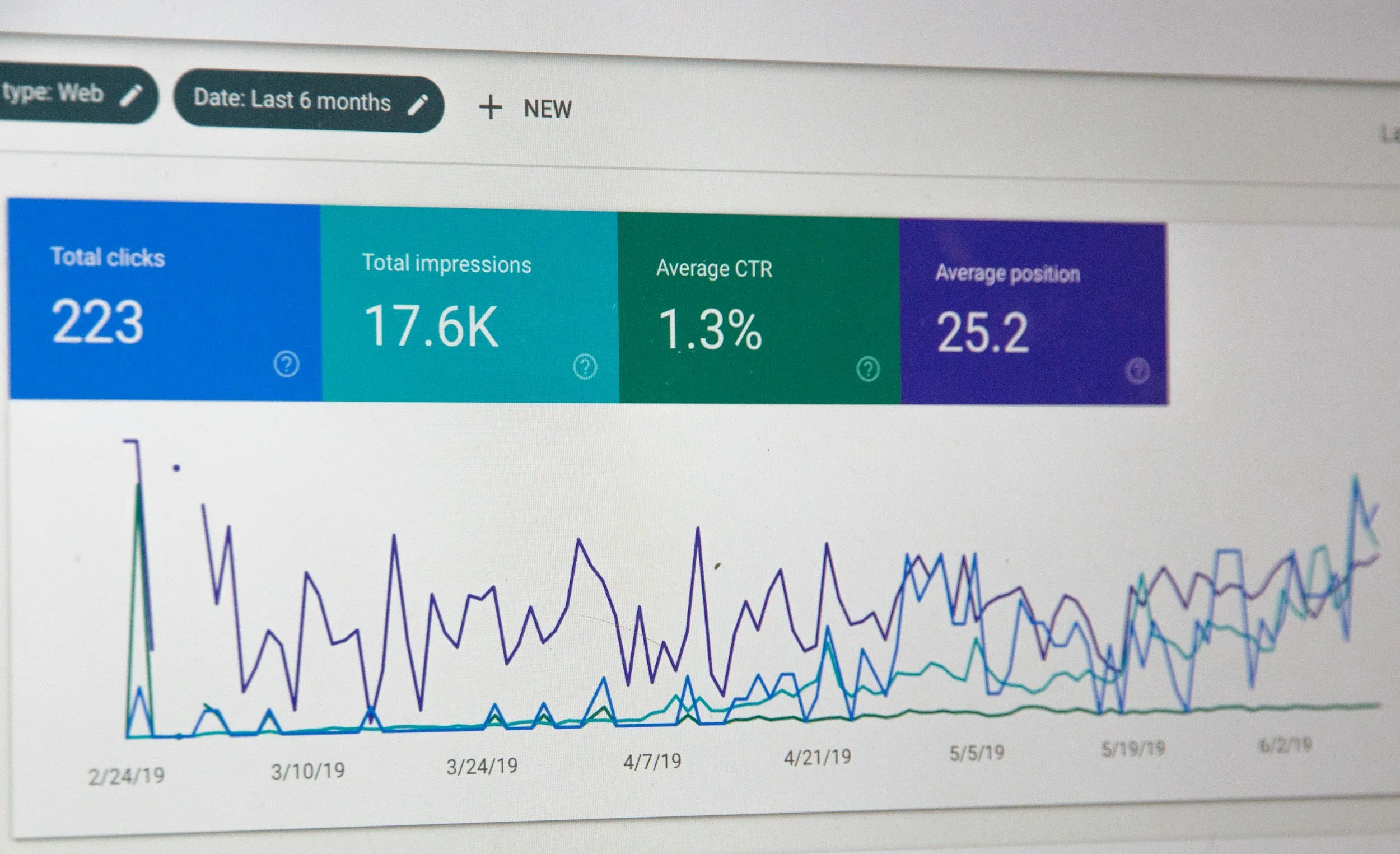Winning Business with Winning Storytelling
Once upon a fiscal quarter, an executive discovered that storytelling is a powerhouse strategy for business.
Today’s meeting rooms and boardrooms are the new campfires, where narratives spark creativity, drive decisions, and transform numbers into narratives that even the most data-averse can appreciate. But in the end it is all about connecting, resonating and being relevant to your audience(s) and what they are looking for.
After all, the most memorable campfire tales are the ones that stick with you.
Storytelling is far more than a catchy hook—it’s a complete package of narratives, genuine moments of connection, touchpoints along the journey, and strategic relevance that keeps you top of mind.
After all, the most memorable campfire tales are the ones that stick with you.
The business of building narratives
Cliché? Perhaps. But, in a world inundated with spreadsheets and bullet points, a well-told story is like a shot of espresso—brief, bold, and downright invigorating. Storytelling in business isn’t about spinning yarns; it’s about crafting a compelling narrative that captures your vision, connects with your audience, and inspires action. It’s the secret sauce that turns a quarterly report into an epic saga of triumph over adversity (with the occasional plot twist, of course).
This is not child's play
Kids love stories because they make sense of the world. Adults, too, crave narratives that break the monotony and bring context to the chaos of corporate life. Whether you’re pitching a new idea, rallying your team, or building your brand, a relatable story can cut through the noise. After all, even the most seasoned professionals were once enchanted by tales of adventure—and they still are, albeit now with more emphasis on ROI than dragon-slaying.
We crave narratives that break the monotony and bring context to the chaos of corporate life.
Lessons from the fairy tale forest
Engagement Over Exposition: Ditch the dry data dump. Instead, wrap your key metrics in a narrative that highlights challenges, victories, and the hero’s journey—preferably with a happy ending (profits, anyone?).
Emotional Connectivity: Stories humanize your brand. They turn abstract values into tangible experiences, creating loyal customers and motivated employees.
Simplification of Complexity: When your business jargon sounds like a foreign language, a story can be the translator that makes everything crystal clear.
Who doesn't love a good story?
Right now storytelling is less about entertaining and more about persuading. A great narrative has the power to transform mundane presentations into memorable experiences, sparking innovation and igniting passion. So next time you prepare your business pitch, consider your narrative arc. After all, behind every successful enterprise is a great story that got everyone excited about the next chapter.
Right now storytelling is less about entertaining and more about persuading.
In the end, storytelling is the grown-up’s tool for making sense of our world, inspiring action, and, most importantly, keeping us all awake during those long meetings.
Who’s ready to rewrite the company story?
The (Almost) Lost Art of Listening: Reclaiming Joy in a Bluetooth World
Dust off that record player, feel the album cover in your hands, and let the music take you on a journey—a journey that honors both the convenience of modern technology and the timeless magic of truly immersive listening.
Remember when music wasn’t just a background hum at your local coffee shop but a tangible, immersive experience? Thanks to the rise of wireless and/or Bluetooth speakers and the endless buffet of streaming playlists, music has, in many ways, been transformed into a mere commodity. A recent Atlantic article—"Bluetooth Speakers Are Ruining Music"—explores this modern paradox, questioning whether our convenience is costing us the magic of truly engaging with our tunes.
The Commodification of Music
We are in a tech-saturated era, music is everywhere. With a simple tap on your phone, you can summon a world of sound without ever having to interact with a physical medium. This ease of access has turned music into a service (MaaS)—an item to be consumed on the fly, much like a quick snack rather than a full-course meal. The Atlantic article paints a vivid picture of how Bluetooth speakers, those pocket-sized prophets of wireless freedom, are inadvertently contributing to this commodification.
We are in a tech-saturated era, music is everywhere. With a simple tap on your phone, you can summon a world of sound without ever having to interact with a physical medium. This ease of access has turned music into a service (MaaS)—an item to be consumed on the fly, much like a quick snack rather than a full-course meal.
While these speakers bring undeniable convenience, they also strip away the ritualistic element of music listening, specifically fidelity.
Once, cradling a vinyl record or a CD was an event (and it still is for yours truly)—a deliberate, tactile interaction with the medium that elevated the listening experience. Today, pressing “play” on a streaming app is so effortless that it risks turning music into a background filler rather than a focal point of our day.
The Allure of Tactile Listening
There’s something intrinsically satisfying about the tangible aspects of music consumption. Whether it’s the tactile sensation of flipping through a record collection, the satisfying click of a CD case, or even the ritual of assembling a modern or vintage stereo system, these little rebellious practices invite us to slow down and savor the moment. They create a space where music isn’t just something you hear—it’s something you feel, something that demands your full attention.
These little rebellious practices invite us to slow down and savor the moment.
When we let Bluetooth speakers—and the culture of on-demand music—take over, we often find ourselves multitasking: working, scrolling through social media, or half-listening while we run errands. This fragmented way of consuming music might be convenient, but it robs us of the deep connection we can forge with our favorite songs. Engaging physically with music—the album art, the liner notes, even the feel of a well-worn record—is an experience that digital streaming simply cannot replicate.
The Importance of Dedicated Time for Thoughtful Listening
The Atlantic piece serves as a wake-up call: in our rush for convenience, we risk losing the thoughtful, reflective space that quality music deserves. Here’s why setting aside dedicated time to listen can transform your musical experience:
Deep Connection: When you carve out time to truly listen, you allow yourself to connect with the nuances of the music—its layers, its mood, its story. This connection can lead to a richer, more personal relationship with the art form.
Mindfulness and Presence: Thoughtful listening is a form of mindfulness. It requires you to be present, to put aside distractions, and to immerse yourself fully in the sound. This can be a much-needed respite in our hyper-connected, always-on world.
Rediscovering Rituals: Reviving the tactile aspects of music—such as dusting off a vintage record player or exploring a local record store—can bring back a sense of ritual and joy. These activities remind us that music is not just a commodity but a form of art that deserves time and respect.
Enhanced Appreciation: By slowing down, you allow the music’s details to emerge. You might notice the subtle guitar riff in the background, the delicate harmony in a chorus, or the emotion in a singer’s voice—all of which can be lost in the rush of casual listening.
This fragmented way of consuming music might be convenient, but it robs us of the deep connection we can forge with our favorite songs. Engaging physically with music—the album art, the liner notes, even the feel of a well-worn record—is an experience that digital streaming simply cannot replicate.
Embracing a Hybrid Approach
It isn’t about rejecting technology entirely but rather finding a balance. Bluetooth speakers and streaming services aren’t inherently evil—they’re tools that have revolutionized how we access music. However, acknowledging their limitations and deliberately making time for tactile, thoughtful listening can enrich our lives in unexpected ways.
Imagine a lazy Sunday afternoon: you could simply tap play on your favorite streaming service, or you could take a detour and rediscover the pleasure of digging through your record collection. Perhaps even host a “listening party” where friends gather not just to hear music but to experience it together—discussing favorite tracks, sharing memories, and reconnecting with the art form in a way that no playlist algorithm could ever replicate.
The commodification of music, highlighted by the convenience of Bluetooth speakers, is a double-edged sword. On one side, we have unprecedented access to an endless stream of tunes. On the other, we risk diluting the richness of our musical experiences. The Atlantic article serves as an important reminder that while technology has its place, there’s unparalleled value in the tactile, thoughtful engagement with music.
So next time you’re about to hit play on your phone, consider setting aside a moment to truly listen. Dust off that record player, feel the album cover in your hands, and let the music take you on a journey—a journey that honors both the convenience of modern technology and the timeless magic of truly immersive listening.
Monday Morning Marketer: Full Funnel Integration
By adopting these best practices, brands can create a cohesive, high-impact marketing strategy that nurtures prospects, maximizes conversions, and fosters long-term customer relationships.
Best Practices for Full-Funnel Integrated Marketing: Maximizing Impact with Automation, Content, Lifecycle Marketing, and Demand Generation
A well-executed full-funnel integrated marketing strategy ensures a seamless customer journey from awareness to advocacy. By leveraging an integrated campaign with specific focus on marketing automation, content marketing, lifecycle marketing, and demand generation, businesses can create a cohesive approach that drives efficiency and performance. Here are best practices to optimize each component for maximum impact.
Marketing Automation: Enhancing Efficiency and Personalization
Marketing automation streamlines repetitive tasks, personalizes customer interactions, and nurtures leads effectively (learn more). To maximize its potential, segment audiences intelligently using behavioral and demographic data to create tailored audience segments, ensuring relevant messaging at each touchpoint. Implement lead scoring models to prioritize high-intent leads and nurture lower-scoring prospects with automated email sequences and retargeting. Integrate automation across email, social media, paid ads, and SMS to maintain consistent communication and drive conversions. Regularly test subject lines, CTAs, content, and workflows to refine performance and improve ROI.
Content Marketing: Fueling Engagement and Conversion
Content is the backbone of an integrated marketing strategy, attracting and educating prospects at each funnel stage (guide to content marketing). To optimize content marketing, map content to the customer journey by leveraging blog posts, social media, and videos to introduce your brand and address customer pain points in the awareness stage. Provide in-depth resources such as webinars, whitepapers, and case studies to showcase value during the consideration stage. Offer product demos, free trials, and testimonials to build trust and encourage conversions at the decision stage. Ensure content is optimized for search and strategically distributed through owned, earned, and paid channels. Repurpose high-performing content into multiple formats, such as transforming a blog into an infographic or a webinar into a podcast, to maximize reach.
Lifecycle Marketing: Driving Retention and Advocacy
Lifecycle marketing focuses on nurturing relationships beyond acquisition to build long-term loyalty (read more). Create automated onboarding sequences with helpful content and guidance to ensure a smooth customer experience. Send personalized messages based on user actions, such as cart abandonment reminders, renewal prompts, or upsell opportunities. Develop loyalty and advocacy programs to reward repeat customers and encourage user-generated content, referrals, and reviews to build brand advocacy. Leverage email, in-app messaging, and exclusive content to keep customers engaged and minimize churn.
Demand Generation: Creating Sustainable Growth
Demand generation bridges the huge gap between awareness, consideration, and conversion, focusing on long-term customer acquisition strategies (explore demand generation). Use intent data, account-based marketing (ABM), and predictive analytics to focus efforts on high-value prospects. Align efforts across paid media, organic search, social media, and events to generate consistent brand awareness and demand. Offer valuable resources like industry reports, toolkits, and webinars to capture high-quality leads. Foster collaboration between sales and marketing teams to ensure seamless lead handoff and follow-ups.
My Specialty: The Power of Integration
A successful full-funnel integrated marketing strategy hinges on the seamless collaboration of automation, content, lifecycle marketing, and demand generation. Establish unified KPIs to set shared goals across teams and measure funnel performance holistically. Leverage data and analytics using dashboards and attribution models to track campaign effectiveness and optimize accordingly. Continuously refine strategies based on performance data, customer insights, and evolving market trends.
By adopting these best practices, brands can create a cohesive, high-impact marketing strategy that nurtures prospects, maximizes conversions, and fosters long-term customer relationships.
AI disclaimer: AI was used as a post-write proofreader and provided work replacement suggestions and spelling and typographical assistance. Model: GPT-4o




